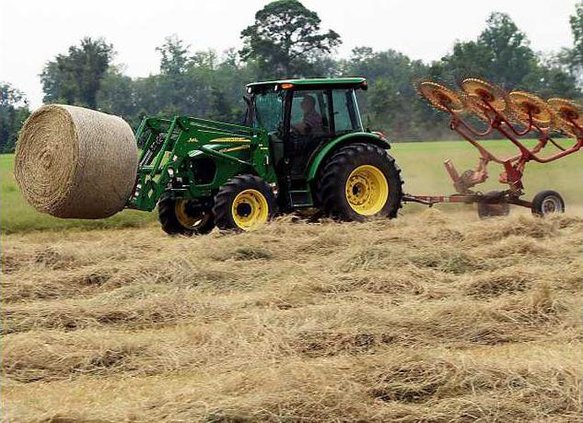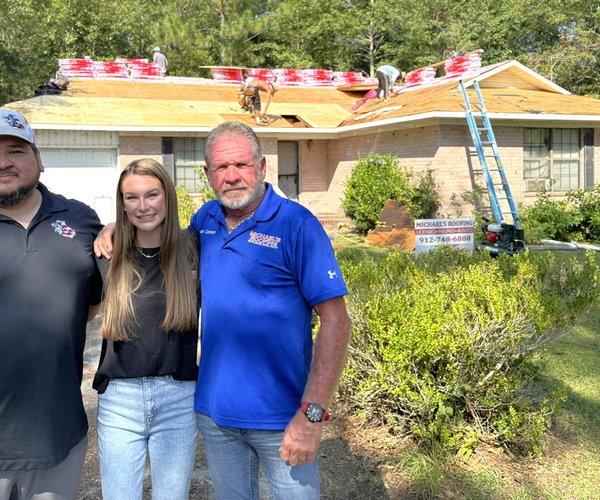By Blake Carter, ANR Agent, UGA Extension
This past week, we faced our first real storm of the season in Debby. As with any storm, once the initial weather passes through, our attention turns to the aftermath.
The question arises, what is the damage on our crops? This is where things get tricky. There are a few things to consider when determining what the damage is or will be. A hard estimate of yield loss is almost impossible to gauge currently. The effects on the crops really could take weeks to show up.
Take cotton for example. Most of the crop is in the third or fourth week of bloom with continued boll development and boll set being full speed ahead. None of the bolls have opened yet, which makes yield loss more difficult to forecast. The cotton plants must have an aerobic environment to survive.
If the field or part of the field remains water-logged for a prolonged period of time, then death can and will incur. When the supply of oxygen is cut off, then the plant could die in as little as 36 hours. Even if the plant doesn’t die, many may turn chlorotic and experience yellowing of the leaves along with red stems. The biggest variable that will save or lead to a possible recovery is for a quick field drying out process and plenty of sunshine, which you have to have sunshine to get any recovery and drying. This is just one example of how our crops can be affected, but will not be felt until later down the road.
There are stories in SW Georgia of plants in fields literally floating away. That definitely makes loss estimation a little easier, but at the moment we have not seen any of that in Effingham. Where our biggest hurdle lies, is being able to enter into our fields. Whether that is hay fields or peanut and cotton fields, the excess rainfall throws off timing. This part of the year, armyworms are in full swing, disease management is a must in peanuts, and growth regulators in cotton have to be applied. These tasks are much more difficult to do if you cannot get into a field to address them.
So, what can growers do right now?
1. In initial evaluations shortly following Hurricane Debby, exercise caution! Many roads are likely to be damaged where rainfall was excessive; trees will be downed; powerlines might be down, etc. Let’s exercise caution and be safe while evaluating impacts to the crop.
2. Document everything! Crop damage, structural damage, etc. The more pictures, the better. Depending on the program, contact either your crop insurance agent or local FSA office. Take pictures of the damage and do not burn any debris. An adjuster or FSA representative will need to survey the damage; so it is important to delay cleanup until damage has been assessed or cleanup permission has been granted. Even though the damage may not be visible now, reporting potential damaged areas now can help you if something ends up happening later because of the storm. You can always cancel a claim if the crop recovers.
3. Let’s not rush any management decisions! It is likely that immediately after the storm, you will not like how your crop looks and will want to do something about it. If you have questions on management following this storm and want to run ideas/theories by your county agent, please reach out to them and we will try to help as much as possible.
Below I have also outlined some specific information for our hay producers and livestock owners that has been modified from the UGA Publication Dealing with Pasture, Hay, Feed, and Livestock Losses After Significant Weather Events.
1. Damage to Hay Bales: Pasture-based livestock producers need to assess and document the loss of hay as soon as it is safe to do so. If a producer experiences hay loss, they should take time-stamped photos of the bales while they are still on the property or in place where the bales are stored. Make sure to write down the number of bales, type and quality of hay, and the estimated weight or size (e.g., 4-by-4 feet, 5-by-5 feet). Contact the FSA office and submit this information as soon as possible. Eligible hay losses can be covered under Emergency Assistance for Livestock, Honeybees, and Farm-Raised Fish Program (ELAP).
To qualify for this program, hay must have been baled before the damage occurred. The program will not cover hay that was cut and on the ground; or hay that had not yet been harvested. The program also only covers hay purchased or cut to feed on the farm. It does not cover hay that was cut to sell commercially, so producers will likely need to document that they own livestock that they planned to feed the hay that was lost in the storm. Farmers must file a notice of crop loss to the FSA office within 30 days of the loss.
2. Damage to Pastures: In significant weather events with heavy rain or flooding, pastures can be extensively impacted. Warm season perennial pastures (bermudagrass and bahiagrass) can likely survive up to one week or longer under flood waters with minimal overall damage to the pasture. The ELAP program will cover losses to pasture up to 150 grazing days, but allowances will be unique to each significant weather event.
At a minimum, producers should document the extent of their losses. Making notes on a map and keeping a log of lost grazing days is important. In flooding, producers should document where flood waters reached, when water receded, and proof that livestock had to be removed. If losses are allowed, reports of affected pasture acres will need to be provided to the FSA office
3. Loss of Feed: Lost feed that farmers had on hand (including commercial feed and harvested commodities) will be covered by the ELAP program. Farmers should document the amount and type of feed that was damaged by the storm. Flood damaged feed, commodities, and crops are considered adulterated and need to be considered a loss.
To summarize, the answer to the most asked question regarding crops is, “We do not know, yet.” In the coming weeks we will be able to have a better idea of the impact the rains had across the county. I did not mention this earlier, but any fruit and tree crops that are covered through crop insurance and damaged also need to be documented. The more you can document, and the faster you talk to either FSA or your crop insurance company, the better. There will be a new podcast episode going into more details surrounding the storm damage potential coming out Friday morning, Aug. 9. To check it out go to https://podcasters.spotify.com/pod/show/tillinitlikeitis. If you have questions, give me a call at 912-754-8040.








